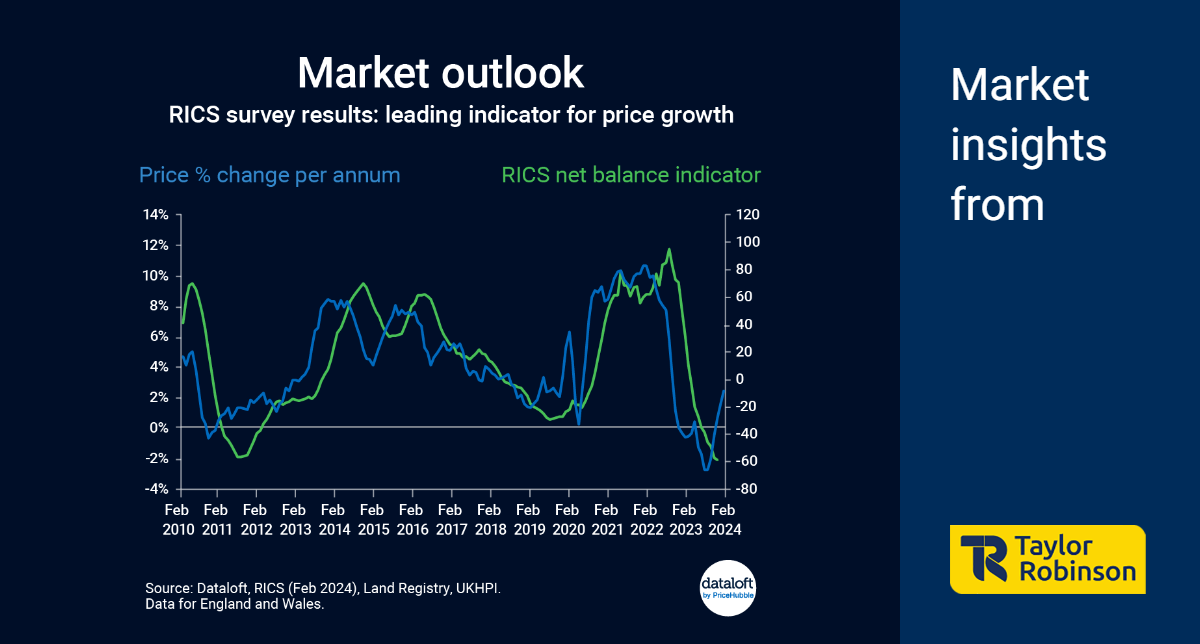
As interest rates reach their peak and inflation rates show signs of decline, the market outlook is gradually shifting towards cautious optimism. Several leading indicators, including the Royal Institution of Chartered Surveyors (RICS) Monthly Survey, offer insights into the market's trajectory, particularly concerning house prices in England and Wales.
The RICS Monthly Survey serves as a reliable barometer, often leading trends in housing market dynamics. Its headline net balance indicator, which measures the difference between surveyors expecting a price rise and those anticipating a price fall, provides valuable insights into market sentiment.
According to the February 2024 survey, there are indications of continued stabilization in house prices over the coming months, with a potential return to modest levels of positive price growth. This suggests that the market may be gradually moving towards a more balanced state, offering hope for both buyers and sellers alike.
Furthermore, the survey revealed a promising trend in both buyer enquiries and new seller listings, hinting at a potential uptick in market activity. This increase in buyer interest coupled with a rise in seller listings could contribute to a healthier housing market ecosystem, fostering greater liquidity and transaction volume.
These findings align with broader economic trends, such as peaking interest rates and a moderation in inflation, which are conducive to market stability. With interest rates reaching their zenith, borrowers may find themselves more inclined to enter the market, taking advantage of relatively favourable borrowing conditions before rates potentially begin to decline.
Moreover, a lower inflation rate can alleviate concerns about affordability and purchasing power, thereby bolstering consumer confidence and incentivizing spending and investment. This could translate into increased demand for housing, further supporting the positive trajectory of house prices.
It's essential to consider multiple data sources to gain a comprehensive understanding of market dynamics. Alongside the RICS Monthly Survey, insights from organizations like Dataloft, as well as data from the Land Registry and UK House Price Index (UKHPI), offer valuable perspectives on market trends and conditions.
While cautious optimism pervades the current market outlook, it's important to remain vigilant and adaptable in response to evolving economic conditions. Uncertainties, such as geopolitical tensions or unexpected shifts in monetary policy, could influence market dynamics and warrant careful monitoring.
The convergence of peaking interest rates, lower inflation, and positive indicators from sources like the RICS Monthly Survey suggests a cautiously optimistic outlook for the market. As stakeholders navigate this landscape, leveraging timely insights and maintaining flexibility will be key to capitalizing on emerging opportunities and mitigating potential risks.
This cautious optimism translates well to Crawley, West Sussex. With house prices expected to stabilize and potentially see some low growth, Crawley residents looking to sell can approach the market with more confidence. Additionally, a potential increase in buyer enquiries could benefit those looking to offload their properties. Overall, the signals point towards a more balanced market in Crawley, which could be positive for both buyers and sellers.









